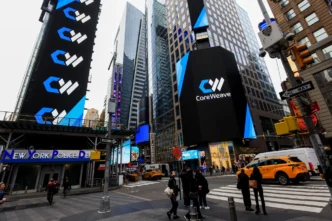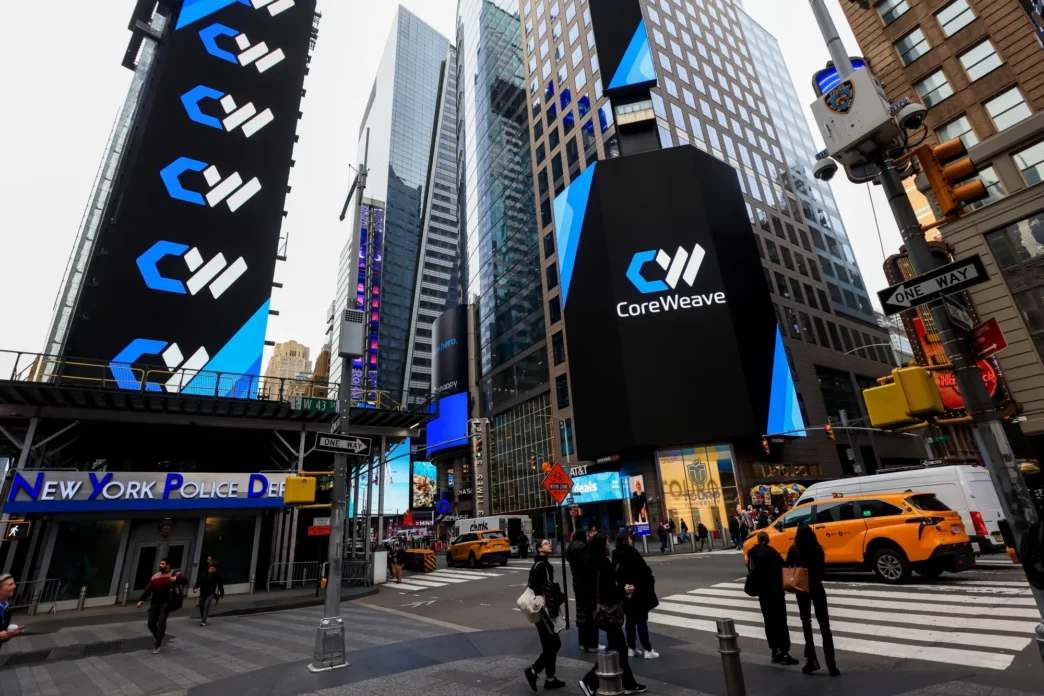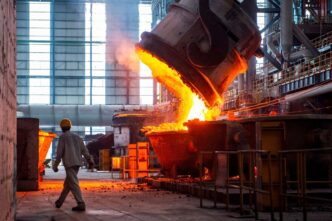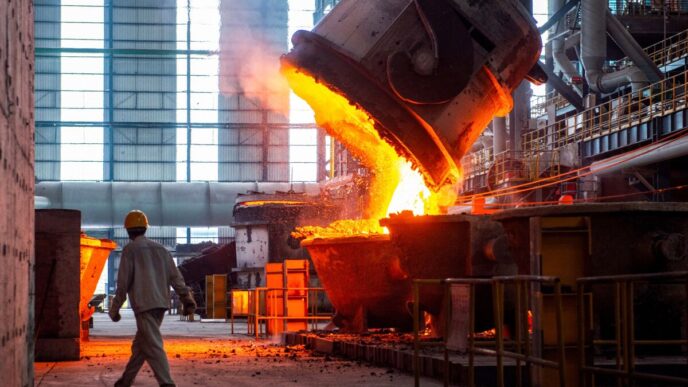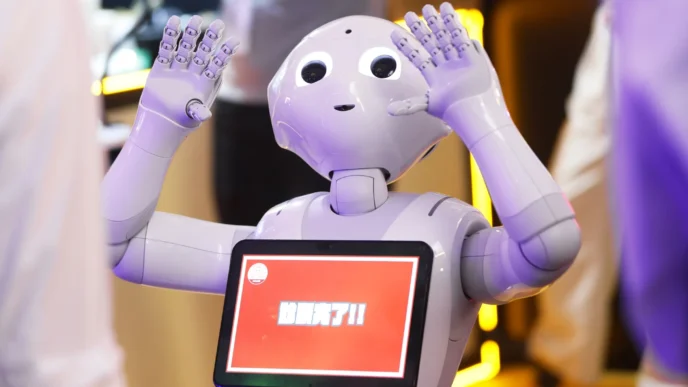CoreWeave, once a niche cloud-computing startup specializing in high-performance GPUs, has become one of Wall Street’s most talked-about success stories—and one of its biggest concerns.
Now valued at over $50 billion, the data-center operator is being hailed as a critical player in powering artificial intelligence, the technology shaping everything from autonomous driving to large language models. But while investors are cheering its explosive growth, skeptics warn that CoreWeave’s financial structure—built on debt, speculative expansion, and AI hype—may expose the company as a symbol of an emerging AI infrastructure bubble.
The debate around CoreWeave reflects a broader question gripping the market: Are data-center providers and AI hardware players being valued on sustainable fundamentals—or runaway optimism?
From Crypto Miner to AI Powerhouse
CoreWeave’s origins are far from its current reputation as an AI infrastructure leader. Founded in 2017 by former Ethereum miners, the company initially operated GPU clusters to support blockchain operations. When crypto markets cooled, CoreWeave pivoted decisively to cloud computing, capitalizing on surging demand for graphics processing units (GPUs) needed to train and run AI models.
The timing was perfect. As OpenAI, Anthropic, and Stability AI accelerated their computing requirements, CoreWeave retooled its infrastructure to become one of the largest independent GPU cloud providers in North America. Its partnership with Nvidia, the undisputed leader in AI chips, gave it both credibility and capacity.
By 2024, the company had grown from a niche operator into a global player, raising billions in private funding rounds led by Magnetar Capital, Blackstone, and Fidelity.
The Valuation Surge: Riding the AI Wave
CoreWeave’s market value has skyrocketed alongside the AI boom. Analysts estimate that the company’s revenue has grown tenfold in under three years, driven by long-term contracts with AI startups and enterprise clients seeking dedicated computing power.
The company has expanded aggressively, signing multi-billion-dollar financing agreements to build new data centers across the U.S. and Europe. These facilities—massive energy-hungry complexes filled with Nvidia GPUs—are designed to serve the growing needs of AI developers, cloud-service providers, and national research programs.
But this expansion is heavily financed. According to investor documents, CoreWeave has taken on several billion dollars in debt to fund its infrastructure build-out. That leverage, combined with a still-developing cash flow profile, has prompted growing unease among analysts and bondholders.
“CoreWeave is the quintessential story of the AI era,” says Mark Hayden, a technology analyst at Capital Insights. “Huge promise, massive scale—but also extraordinary risk.”
The Bear Case: Debt, Dependence, and Overvaluation
For critics, CoreWeave’s rise embodies the speculative excesses of the AI infrastructure trade. Bears argue that while the company’s technology and client base are impressive, its valuation reflects future perfection rather than present profitability.
Key concerns include:
- Heavy Leverage
CoreWeave has borrowed billions through private loans and structured financing to fund its rapid expansion. Much of that debt carries variable interest rates, exposing the company to higher refinancing costs in a rising-rate environment. - Dependence on Nvidia
CoreWeave’s entire business model depends on access to Nvidia’s GPUs—specifically the high-end H100 and forthcoming B100 chips. Any supply chain disruption, pricing change, or competition from rival chipmakers could dramatically alter its margins. - Customer Concentration
Analysts estimate that a small group of AI-focused companies—many of them venture-backed startups—account for a large share of CoreWeave’s revenue. Should those clients face funding challenges, CoreWeave could be left with underutilized infrastructure. - Limited Profitability
Despite surging revenue, CoreWeave remains only marginally profitable. Its massive capital expenditures mean free cash flow remains deeply negative, and analysts expect this trend to continue for several years.
“This looks eerily like the data-center boom of 1999,” warns financial strategist Erin Patel. “Lots of infrastructure, lots of demand—but not necessarily the sustainable returns investors expect.”
The Bull Case: Infrastructure as the AI Economy’s Backbone
Supporters counter that CoreWeave represents the critical plumbing of the AI revolution, comparing its role to that of Amazon Web Services (AWS) during the early internet boom.
They argue that building scalable GPU infrastructure is a long-term play, and that CoreWeave’s strategic position—combining proximity to U.S. clients, partnerships with Nvidia, and rapid deployment capabilities—gives it a durable competitive moat.
The bullish thesis rests on three points:
- AI Compute Is the New Oil
As machine learning and generative AI become embedded in every industry, demand for computing power will outstrip current global supply for years. CoreWeave’s capacity investments position it to capture that demand curve. - Strategic Relationships
CoreWeave’s deep integration with Nvidia gives it privileged access to hardware and software optimization, something few independent operators can match. - Government and Enterprise Contracts
The company is reportedly bidding on several large government and defense AI projects—potentially adding stable, long-term revenue streams.
“CoreWeave is building the digital equivalent of railroads,” says Daniel Groves, a venture capitalist focused on AI infrastructure. “Yes, it’s capital-intensive—but it’s also foundational. Without it, the AI economy can’t scale.”
AI Infrastructure: Boom or Bubble?
The broader question surrounding CoreWeave’s rise isn’t just about one company—it’s about whether the AI infrastructure market itself is overheating.
Over the past 18 months, dozens of private and public firms—ranging from GPU suppliers to power companies—have seen valuations soar as investors bet on a once-in-a-generation technology shift. Yet history offers a warning: when too much capital chases a new frontier, the result can be overcapacity, consolidation, or collapse.
In particular, concerns are mounting that the AI compute market could face a “capacity hangover” if expected demand slows or model training becomes more efficient. Companies that borrowed heavily to expand could be left with underutilized data centers and mounting debt burdens.
“We’ve seen this movie before,” says Laura Chen, senior economist at Horizon Analytics. “From railroads to dot-coms to crypto mining—each cycle creates enormous value, but also enormous waste.”
Energy and Environmental Pressures
Another emerging challenge for CoreWeave and its peers is energy consumption. AI data centers require immense power and cooling infrastructure, straining local grids and increasing operational costs.
With sustainability now a central focus for institutional investors, companies like CoreWeave must demonstrate not only profitability but also environmental responsibility. Several of its data center projects have already faced scrutiny over energy usage and land permits in states like Texas and North Carolina.
If regulatory or environmental constraints tighten, CoreWeave’s expansion trajectory could slow significantly.
The Road Ahead
CoreWeave’s story encapsulates both the promise and peril of the AI revolution. On one hand, it stands at the heart of the most transformative technological wave since the dawn of the internet. On the other, it embodies the financial exuberance and fragile economics that often accompany such moments.
Whether the company becomes the AWS of AI or the WeWork of data centers will depend on its ability to balance growth with financial discipline—and on whether the AI boom continues to justify its current valuations.
For now, CoreWeave remains both a market darling and a cautionary tale—a reminder that even in an age defined by artificial intelligence, the oldest economic rule still applies: what goes up too fast, without solid foundations, can come down just as quickly.

